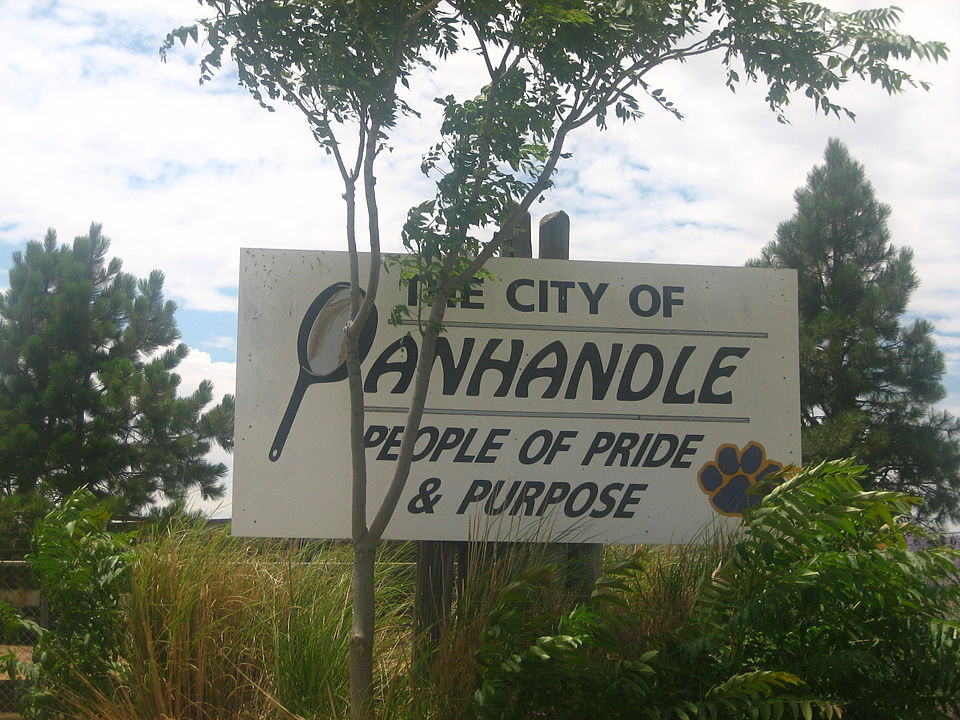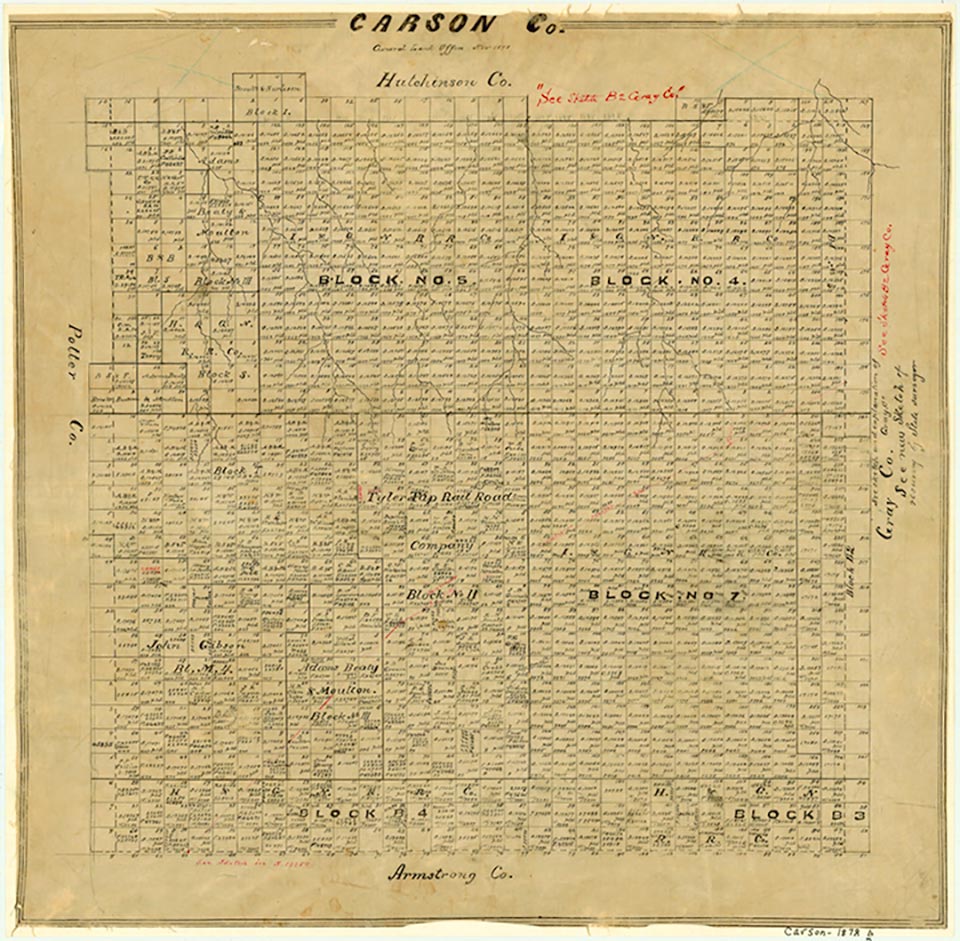Panhandle

Panhandle, Texas
Panhandle, the county seat of Carson County, is on U.S. Highway 60 in the south central part of the county. It derives its name from its location in the Panhandle and was initially named Carson City (for the county) and then later, Panhandle City. The community obtained a post office in 1887 and was platted in January 1888 as the terminus of the Southern Kansas (Panhandle and Santa Fe) Railway, on a site almost surrounded by several large cattle ranches. Over the next few months Panhandle acquired a school, a mercantile store, a bank, a wagonyard, and three saloons. In July 1887 Henry Harold Brookes began the Panhandle Herald (during the 1980s the region's oldest extant newspaper). Edward E. Carhart assisted Brookes in printing the Herald and also served as postmaster, banker, and druggist. Many early settlers made extra money hauling bones of slaughtered buffalo to the railroad to be shipped east to fertilizer plants (see BONE BUSINESS). When Carson County was organized in 1888, Panhandle became the county seat, and a wooden frame courthouse was completed there. Subsequently, several law offices were opened at the community, and the colorful Temple L. Houston frequented Panhandle as an attorney for the Atchison, Topeka and Santa Fe Railway. Townsmen built an interdenominational community church building in 1892. A sanatorium and several doctors' offices made Panhandle a haven for health seekers. The John Callaghan hotel hosted such distinguished guests as Buffalo Bill Cody and rancher Murdo Mackenzie. Frank N. Bishop managed the town's ice and coal business and the grain elevators along the tracks. At times as many as 65,000 cattle were held in the loading pens awaiting railroad shipment. In 1897 the community was scandalized when the Methodist pastor, George E. Morrison, poisoned his wife because he was in love with another woman. This murder, which received widespread attention, resulted in Morrison's trial and subsequent execution on the gallows in Vernon in 1899.
By 1900 Panhandle had a population of 300. In 1909 the town voted to incorporate with a mayor-council government. By then it had several grain elevators, three churches, two banks, telephone service, and a population of 600. The oil boom of the 1920s brought its population level to 2,035 by 1930, and Panhandle became the center of a natural gas field. During the 1920s boom, bonds were voted to install a modern water and sewage system, pave the streets, and provide utilities for the rapidly growing populace. Consequently the onset of the Great Depression in 1932–33 almost caused the city to go bankrupt because of its inability to pay the interest on these bonds; though emergency measures were taken, not until 1965 did Panhandle entirely rid itself of its "Boom Bond" indebtedness. In 1934 the Southwest Race Meet and Agricultural Fair erected new buildings for the annual stock show in Panhandle. A new county courthouse was completed in 1950.
H. Allen Anderson | © TSHA

Adapted from the official Handbook of Texas, a state encyclopedia developed by Texas State Historical Association (TSHA). It is an authoritative source of trusted historical records.

- ✅ Adoption Status:
- This place is available for adoption! Available for adoption!
- Adopted by:
- Your name goes here
- Dedication Message:
- Your message goes here
Belongs to
Panhandle is part of or belongs to the following places:
Currently Exists
Yes
Place type
Panhandle is classified as a Town
Associated Names
- [-City]
- (Carson City)
Location
Latitude: 35.34606810Longitude: -101.38043000
Has Post Office
Yes
Is Incorporated
Yes
Population Count, 2021 View more »
2,337


